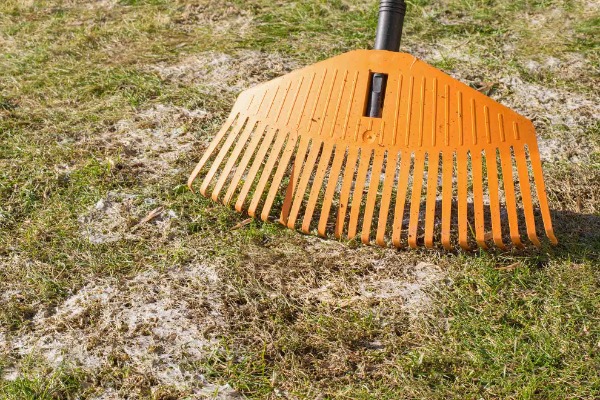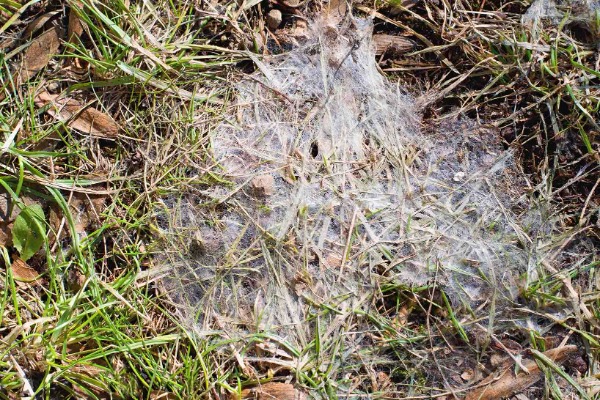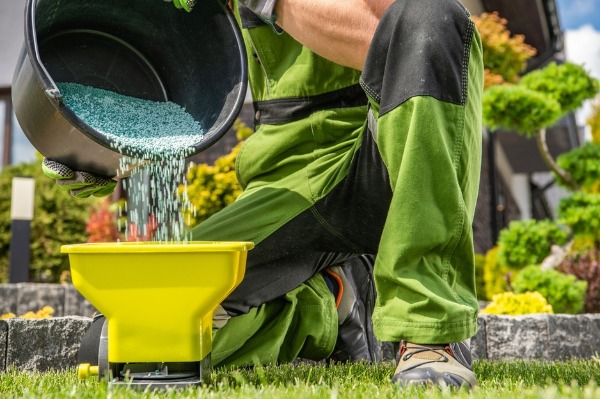How To Maintain Your Lawn In Spring
After months of freezing temperatures, compacted soil, snow cover, and winter debris, your lawn can emerge from dormancy stressed and vulnerable. Early spring in Omaha offers a crucial window to diagnose winter damage, prepare for growing season challenges, and build the foundation for a dense, healthy lawn before summer heat arrives.
To avoid costly turf decline, bare patches, and recurring weed outbreaks, keep the following lawn care priorities in mind when spring arrives in Nebraska.
Clear Away Winter Debris

As snow melts, a surprising amount of debris reveals itself across the lawn. Sticks, leaves, road salt residue, and leftover thatch can smother turf and block early-season sunlight. If this material remains in place, moisture becomes trapped in the crown of the grass, encouraging mold development, thinning, and delayed green-up. Removing these obstructions allows fresh growth to spread evenly and gives air circulation a chance to dry excess moisture after spring rains.
Tips for Clearing Debris:
- Use a leaf rake or dethatching rake to gently lift matted material from the turf.
- Remove branches and twigs to prevent mower damage and uneven turf pressure.
- Gather leftover leaves around fences and corners to prevent fungal activity.
- Allow the lawn to dry slightly before raking to avoid uprooting tender shoots.
Inspect For Snow Mold & Winter Damage

Omaha winters often produce extended periods of snow cover, which can trap moisture against turf and create conditions favorable for snow mold and other cold-weather diseases. These infections appear as matted, discolored patches that may delay spring growth. Assessing damage early makes it easier to correct thinning before weeds take advantage of open soil later in May and June.
When these weakened areas are allowed to persist, turf density declines, root growth slows, and stress responses become more noticeable under summer heat waves.
Tips for Identifying Winter Damage:
- Look for circular, grayish or tan patches where grass appears matted together.
- Gently rake damaged areas to encourage airflow and new shoots.
- Avoid applying nitrogen too early, as it can feed fungal activity.
- Overseed persistent bare spots once soil temperatures warm.
Monitor Soil Temperature & Fertilization Timing

Feeding the lawn too early can stimulate top growth before root systems are ready. In Omaha, watching soil temperature is more reliable than relying on calendar dates. Fertilizing at the right time strengthens density and helps the lawn heal from winter injury. Applying nutrients after the turf begins active growth yields better root establishment and thicker coverage.
Evaluate Mowing Height & Equipment

Early spring is the perfect time to fine-tune mower height before rapid growth begins. Cool-season grasses common in Omaha, such as Kentucky bluegrass and tall fescue, prefer moderate heights that allow for deeper roots while maintaining dense turf. Mowing too low at the start of the season weakens these grasses when they need energy most.
Sharpening mower blades before the first cut prevents tearing, which can lead to frayed tips and increased disease risk under fluctuating spring temperatures.
Tips for Spring Mowing:
- Sharpen blades or replace them if edges are bent or chipped.
- Set mower height to at least 2.5–3.5 inches for early spring growth.
- Avoid scalping uneven high spots; raise deck if needed.
- Begin mowing only once the lawn is actively growing.
Clean Up Edges & High-Traffic Areas

Foot traffic during winter, especially around side yards and walkways, can compact soil and limit oxygen access to the roots. Compacted soil resists water penetration and hampers nutrient uptake. Cleaning up these zones early provides space for new tillers to spread as temperatures warm.
Flattened grass often struggles to spring back without some encouragement, especially where snow piles were repeatedly shoveled.
Tips for Refreshing Problem Spots:
- Aerate compacted edges to improve root access to oxygen.
- Apply a light topdressing mix to level divots created by foot traffic.
- Reseed bare patches before weeds germinate.
- Install stepping stones in heavy-traffic channels to reduce future damage.
Check For Thatch & Consider Spring Aeration
A thin thatch layer is normal, but when that layer becomes excessive, it traps moisture, restricts airflow, and shelters pests. Early spring is a good time to assess thickness; if it feels spongey underfoot, the lawn may be developing an insulation layer that prevents nutrients from reaching the soil.
Aeration in April or May can relieve compaction, especially after wet, heavy snowfall that compresses the yard.
Trim Back Overhanging Branches

Trees provide valuable shade in summer, but heavy canopy coverage in early spring blocks sunlight during prime growth cycles. As grass transitions out of dormancy, even small amounts of shade can delay greening and weaken density.
Branches hanging low over the lawn can also drop twigs and decay material onto turf, creating disease-friendly pockets. Trimming trees early ensures sunlight reaches the soil surface when it’s needed most.
Tips for Tree Maintenance:
- Prune branches that cast heavy shade across early-morning sun paths.
- Use clean tools to avoid transmitting plant diseases.
- Remove broken or storm-damaged limbs before they fall.
- Monitor shade coverage throughout the growing season.
Inspect Irrigation Systems & Drainage Patterns
As the ground thaws, water movement becomes more noticeable. Poor drainage channels, gutter downspout placement, and low yard contours can create early-season puddles. Standing water can suffocate roots and invite fungal outbreaks. Meanwhile, irrigation heads damaged by frost may leak or spray unevenly as watering schedules resume.
Apply A Pre-Emergent Weed Control Product

Early spring offers the most effective opportunity to block crabgrass and other invasive weeds. These weeds thrive when turf density is low from winter stress. Applying a pre-emergent herbicide prevents germination before soil temperatures rise into the ideal weed-growth range. Skipping this step can lead to weed pressure that persists throughout the warmest parts of summer.
Call A Local Lawn Professional For A Spring Assessment
While homeowners can handle most surface-level tasks, some problems lurk deeper, like compaction, fungal activity, irrigation inefficiencies, or long-term density loss. A professional lawn care technician can evaluate winter damage, recommend corrective treatments, and schedule services like aeration, overseeding, or weed prevention with ideal timing.
If you’re ready to get ahead of turf problems this year, contact Summit Lawns for a comprehensive spring evaluation!
